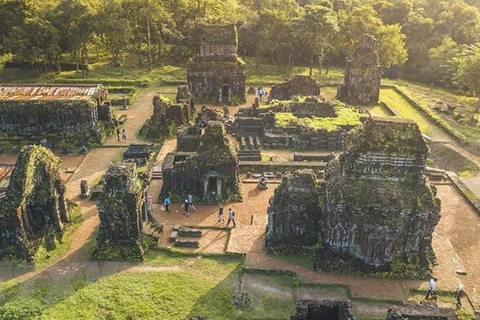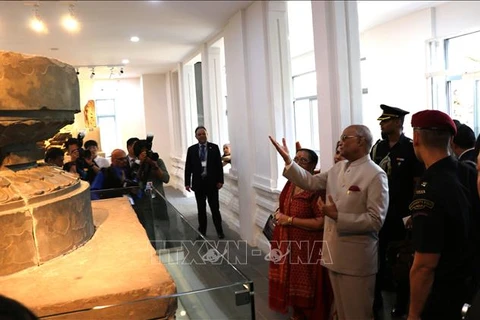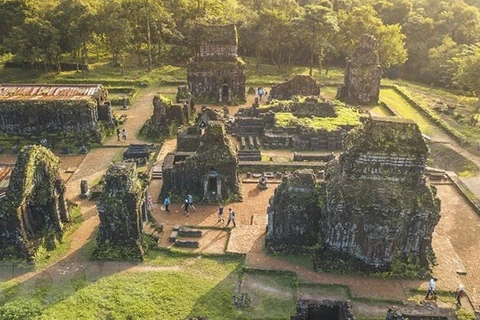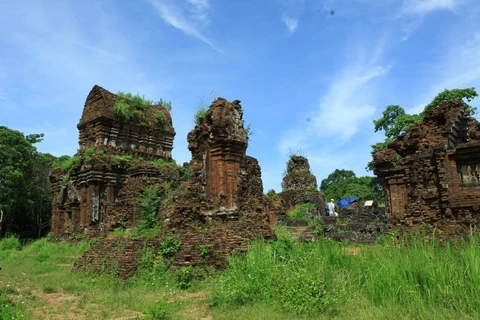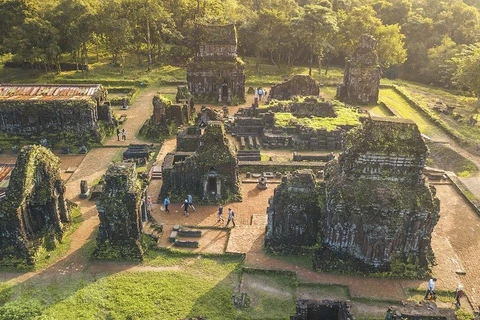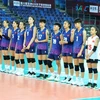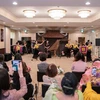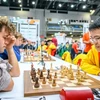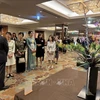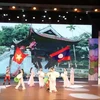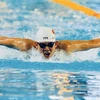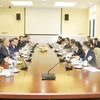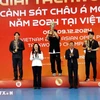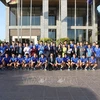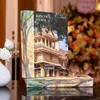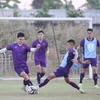Quang Nam (VNA) – Experts discussed restoration training and preservation of world cultural heritage sites, including My Son Sanctuary of Vietnam, at an international conference in Quang Nam province on May 27.
The event was held to mark the end of the first stage of an archaeological research and restoration project in My Son Sanctuary. The project is carried out by the Quang Nam Technology College and the centre for restoration training and cultural relic preservation of Italy’s Polytechnic University of Milan.
Phan Ho, head of the My Son cultural heritage site’s management board, said restoration that ensures the authenticity and core values of relics is the basic principle of all restoration projects, which must be absolutely adhered to at world cultural heritages like My Son Sanctuary.
In the past, the rehabilitation of My Son mainly depended on foreign experts and technicians. However, two years since the first training course for relic restoration and preservation workers opened with the support of the Polytechnic University of Milan, My Son heritage site’s management board now has capable staff, he noted.
Vice Chairman of the Quang Nam provincial People’s Committee Tran Van Tan said thanks to archaeological and preservation cooperation programmes implemented for decades, My Son Sanctuary has escaped from the dilapidated condition with its towers in their original state and values restored.
He expressed his hope that the decades-long experience at My Son Sanctuary will be useful for the rehabilitation of other relics in Quang Nam and countries in the sub-Mekong region.
Once the religious and political capital of the ancient Champa Kingdom, My Son Sanctuary is located within a hilly landscape in Duy Phu commune of Quang Nam’s Duy Xuyen district, about 70 km southwest of central Da Nang city and 40 km from Hoi An city.
It is comprised of eight groups of 71 monuments built throughout the 7th to 13th centuries.
The first construction in My Son dates back to the 4th century under the reign of Bhadravarman for the worship of God Shiva-Bhadresvara. Later on, the temple was destroyed.
At the beginning of the 7th century, King Sambhuvarman had it rebuilt and rebaptised Sambhu-Bhadresvara. Each new monarch came to My Son after his accession to the throne for the ceremony of purification and to present offerings and erect new monuments, which explains why My Son is the only place where Cham art flourished without interruption from the 7th to 13th century.-VNA
VNA

